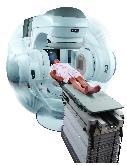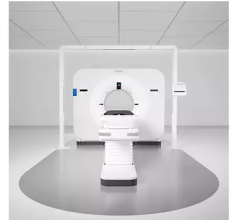
April 28, 2010 - New approaches to image-guidance and motion management are making it possible to successfully target lung, liver and spinal tumors, which are hard to reach even with instruments like stereotactic body radiotherapy (SBRT) and stereotactic radiosurgery (SRS).
In a symposium in New York earlier this month, leading clinical experts who have treated more than 3,800 patients with SBRT or SRS, spoke about their own experiences with the technology.
Robert Timmerman, M.D., of the University of Texas Southwestern Medical Center, presented findings from RTOG 0236, a recent multicenter study of SBRT in the treatment of medically inoperable lung cancer patients. At three years post-treatment, the rate of overall survival for these study patients was 56 percent, as compared with historical survival rates of 30 to 50 percent for similar patients treated with conventional radiation. The primary tumor control rate was extremely high at 97.6 percent. Dr. Timmerman noted, "That is more than double the rate of primary tumor control achieved in earlier studies where conventional radiotherapy was used."
Yoshiya Yamada, M.D., Memorial Sloan-Kettering Cancer Center of New York, talked about the role of radiosurgery in managing spine metastases. He said spine radiosurgery is effective for patients who do not have any spinal compression, and he noted the literature consistently shows local control rates of up to 85 percent for these patients. "They often experience near complete pain relief," he said.
By injecting and staining tumors with an iodine-rich oil, Martin Fuss, M.D., professor of radiation medicine at the Oregon Health and Science University in Portland, can more clearly see the image-guidance tools. Dr. Fuss uses intensity-modulated radiation therapy (IMRT) and the RapidArc delivery technique on the Novalis Tx system from Varian and BrainLAB to deliver SBRT treatments for liver tumors. With the enhanced visualization technique, he can concentrate high doses on tumors, while achieving a sharper reduction in dose to tissue around the tumor.
For more information: www.varian.com


 November 04, 2025
November 04, 2025 









